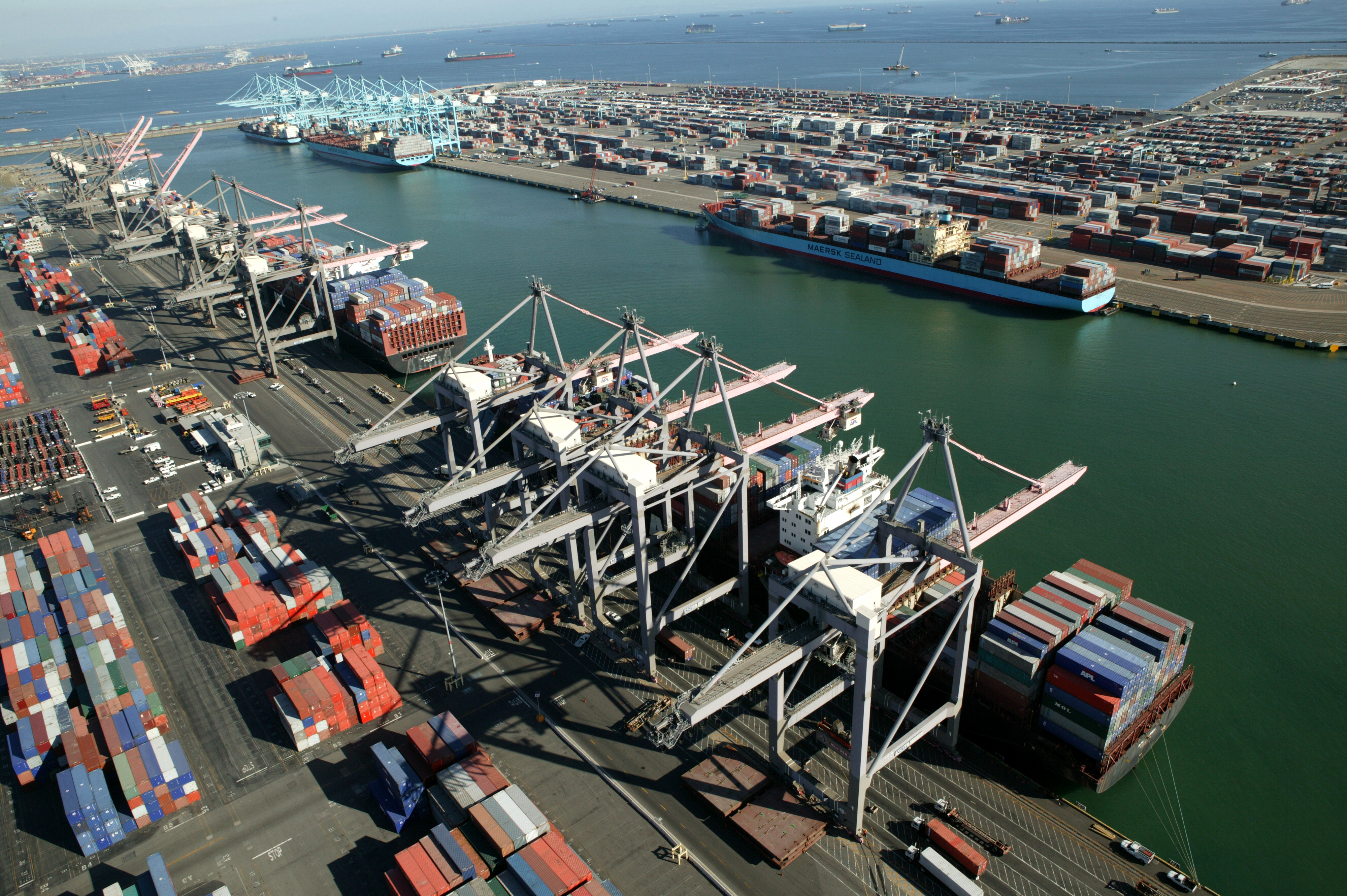Shipping and Logistics

Tight Truck Capacity Hitting Multiple Shipping Sectors
Written by Sandy Williams
February 15, 2018
February shipping is fraught with higher rates, low capacity and shipping delays. The trucking industry is battling a dwindling labor pool and ELD disruptions that are making rail disruptions more difficult and even causing ocean carriers to take notice.
Seaborne freight
Vessel freight rates are expected to rise for contracts priced for March and April, according to the latest MID-SHIP Report. An optimistic outlook is spurring firming freight rates for 2018 and building of new vessels. This year, the dry bulk fleet is estimated to grow at about 1 percent and cargo volume is by about 3 percent, says MID-SHIP.
The Baltic Dry Index was at a six-month low in February as vessel rates dropped ahead of the Lunar New Year break. The BDI dipped to 1,095 as of Feb. 14 from 1,365 on Jan. 8. BDI tracks dry-bulk rates based on vessel size and shipping route and is used as a benchmark for overall trade volume.

Carriers sending goods to the United States are running into problems finding trucks to move intermodal freight inland and at reasonable cost. More on that later.
River
Traffic is closed on parts of the Upper Mississippi due to ice and lock repairs during the winter season. Fog has been a problem on the Lower Mississippi River, Houston Ship Channel and Gulf Intracoastal Waterway causing overnight delays for barges. Melting snow on the rivers funneling into the Mississippi will lead to higher waters and delays in the next few weeks that may result in “high water” surcharges for businesses shipping by barge.
Barge capacity has been tight due a decrease in the barge fleet in 2017 as scrapping of vessels outpaced replacement. MID-SHIP says a steady increase in imported steel raw materials has added to demand. Steel Market Update has been informed that truck shortages have led to some steel businesses in the South resorting to barges to move their products.
 Trucking
Trucking
The big news for trucking, and all shipping, is the continued shortage of drivers and trucks and the resulting rate hikes. Spot rates jumped in January and started to decline for vans and reefers, but climbed again last week for flatbed trucks, wrote DAT Trendlines. The national average flatbed rate gained 2 cents at $2.28 per mile the week of Feb. 4-10. Rates ranged from $3.59 in the Northeast to $1.83 in the West. The flatbed load-to-truck ratio dipped 1 percent to 61.3 loads per truck. The diesel fuel rate was down 3 cents to $3.05 per gallon.
The electronic logging device mandate that went into effect in December has trimmed truck availability as fleets adapt to new requirements that carefully track drivers’ hours on the road.
Some analysts expect the ELD mandate to force changes in how freight rates are calculated, changing to an hourly rate rather than by the mile. Loading and unloading process will need to improve to cut down on idle time for drivers.
Rates and capacity concerns are impacting ocean carriers arriving in the United States. Carriers are increasingly resisting exposure to “store-door” contracts, where they are responsible for transferring containers to trucks for inland delivery due to higher costs of drayage. Carriers want to get containers back in circulation quickly, and the cost and delay in moving them inward by truck is becoming prohibitive.
“Due to the trucking situation, the carriers will do everything they can this year to avoid committing to store-door deliveries,” said Cliff Pyron, chief commercial officer of the Georgia Ports Authority.
Truck rates are also expected to climb as driver compensation increases. Pay hikes for drivers are estimated to add 10 percent to contract rates in 2018 and 2019. Sign-up bonuses will add to the costs as carriers compete for drivers.
Rates may be going up due to infrastructure costs. The American Trucking Association has lobbied for a 20 cent fuel tax to help pay for infrastructure rebuilding. Earlier this week, President Trump said he supports a 25 cent per gallon increase in gas and diesel taxes.
ATA President and CEO Chriss Spear said, “We support the president’s big and bold vision for strengthening American infrastructure. Because it is a user fee, the fuel tax is the most conservative, cost-effective and viable solution to making that vision a reality. Ninety-nine cents of every dollar goes directly to road and bridge maintenance, and it doesn’t add a penny to the deficit. There’s a reason why Ronald Reagan twice signed this idea into law.”
Transportation Secretary Elaine Chao said the idea is on the table, but has pros and cons. “The president has not declared anything out of bounds, so everything is on the table. The gas tax, like many of the other pay-fors that are being discussed, is not ideal,” said Chao. “The gas tax has adverse impact, a very regressive impact, on the most vulnerable within our society, those who depend on jobs, who are hourly workers.”
 Rail
Rail
Rail traffic during the week ending Feb. 10 rose 1.6 percent year-over-year to 519,545 carloads and intermodal units, according to the Association of American Railroads. The total includes 251,058 carloads and 268,487 containers and trailers. Carloads of metallic ores and metals increased 1,010 carloads to 20,396.
CSX’s revamping of its system continues to frustrate shippers. Last March, CSX began implementation of its new strategy that included cuts to intermodal services and decommissioning of locomotives. The result was shipping disruptions that have cost CSX customers and revenue. The timing is especially bad with the trucking industry at such tight capacity.
CSX hopes to prove that by reducing terminals, increasing speeds, and re-routing freight, the rail line will be more efficient.
“When we show people that we are better, and we are substantially better than we were and substantially better than the competition, the business will begin to come back,” said CEO James Foote to analysts Tuesday. “But it’s not something we can just flip a switch on. In some cases you’ve got to win back the customer, and that’s the plan going into 2018.”

Sandy Williams
Read more from Sandy WilliamsLatest in Shipping and Logistics

Longshoremen ratify contract with maritime alliance
Nearly 99% of ILA members voted in favor of a new labor deal with the United States Maritime Alliance that covers workers at ports on the Atlantic and Gulf coasts.

Reibus: Flatbed rates up slightly but uncertainty ahead
With construction seasonally soft, the flatbed market remains softer than the other main trailer types.

US-flagged ore shipments on Great Lakes down in 2024
The Lake Carriers’ Association reported a 4.5% y/y decline in December’s ore shipments of 4.6 million short tons.

ILA, port operators reach tentative deal to avoid strike
Both sides had agreed to extend the current contract to Jan. 15 to continue talks

Wittbecker: Challenges ahead for container freight in 2025
In 2024, volatility with a capital “V” has been the rule. That will remain high heading into 2025.

